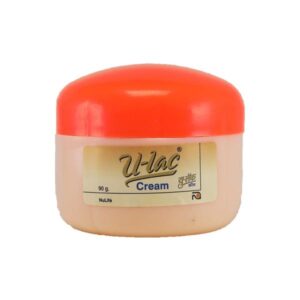LIQUID PARAFFIN + PROPYLENE GLYCOL + LACTIC ACID + UREA
Liquid Paraffin: Liquid Paraffin, also known as mineral oil, is a medication that is primarily used as a laxative. It is a colorless and odorless liquid that is obtained from petroleum. Liquid Paraffin is available over-the-counter and is commonly used to relieve occasional constipation.
The mechanism of action of Liquid Paraffin is quite simple. When ingested, it forms a lubricating layer on the walls of the intestines, which helps to soften the stool. This lubrication aids in the movement of the stool through the intestines, making it easier to pass and relieving constipation.
The typical dose of Liquid Paraffin varies depending on the age and condition of the individual. It is usually administered orally, and the recommended dose is usually 15-30 mL for adults and 5-15 mL for children over the age of 6. However, it is important to follow the dosage instructions provided by a healthcare professional or as indicated on the packaging.
While Liquid Paraffin is generally considered safe for short-term use, prolonged or excessive use may result in some side effects. Common side effects include bloating, abdominal cramps, diarrhea, and anal leakage. It is important to note that excessive or long-term use of Liquid Paraffin may interfere with the absorption of fat-soluble vitamins and lead to deficiencies if not supplemented appropriately.
It is essential to consult a healthcare professional before using Liquid Paraffin if you have any underlying medical conditions, are taking other medications, or are pregnant or breastfeeding. They can provide personalized advice and ensure that Liquid Paraffin is safe and suitable for your specific situation.
Propylene Glycol: Drug: Propylene Glycol
Use: Propylene Glycol is a widely used solvent and preservative in various industries. In the medical field, it is used as a vehicle for medications and as a component in various formulations, including topical creams, ointments, and oral medications.
Mechanism of Action: Propylene Glycol acts as a moisturizer and emollient when applied topically. It helps to soften and soothe the skin and is effective in delivering medications to the desired site of action. When used orally, it helps enhance the absorption of certain drugs.
Dose: The dose of Propylene Glycol varies depending on the specific formulation and intended use. It is commonly used in concentrations ranging from 2% to 10% in topical products, while oral medications may contain 20% or higher concentrations. The exact dosage should be determined by a healthcare professional and should be followed as directed.
Side Effects: Propylene Glycol is considered safe when used as directed. However, some individuals may experience mild to moderate side effects, including skin irritation, redness, itching, or burning, when it is applied topically. In rare cases, allergic reactions, such as hives or swelling, may occur. When used orally, gastrointestinal discomfort, such as nausea or diarrhea, may occur.
It is worth noting that Propylene Glycol is generally recognized as safe by the US Food and Drug Administration (FDA) when used in approved concentrations and for the intended purposes. However, individuals with known allergies or sensitivities to Propylene Glycol should avoid products containing it. It is always recommended to consult a healthcare professional before using any medication or product containing Propylene Glycol.
Lactic Acid: Lactic acid is not a drug but rather an organic compound produced in the body during metabolism. It plays a crucial role in the energy-generating processes, particularly in muscle cells. Please provide the name of a specific drug, and I can provide the information you are looking for.
Urea: Urea is a drug that is used primarily in dermatology for the treatment of various skin conditions. It is a white crystalline solid and is available in the form of creams, ointments, lotions, and gels.
The main mechanism of action of urea is its ability to act as a keratolytic agent. It works by softening and loosening the outer layer of the skin, promoting exfoliation and aiding in the penetration of other medications. Urea also has moisturizing properties and helps to retain water in the skin, improving its hydration.
Urea is commonly used for conditions like dry skin, psoriasis, eczema, and calluses. It can help to relieve symptoms such as itching, scaling, and flaking. Some specific uses of urea include treating corns, calluses, and keratosis pilaris (a common skin condition characterized by small bumps on the skin).
The dose and frequency of using urea depend on the specific formulation and the severity of the condition being treated. It is usually applied topically to the affected area, following the instructions provided by a healthcare professional. It is important to clean and dry the skin before applying the medication.
Although urea is generally well-tolerated, some common side effects may include mild stinging or burning at the site of application. These side effects are usually temporary and subside with continued use. In rare cases, some individuals may experience allergic reactions such as rash, itching, or swelling. If any severe or persistent side effects occur, it is important to seek medical attention.
It is important to note that urea should not be applied to open wounds, broken skin, or areas with infection. It is also not recommended for use in individuals who are hypersensitive or allergic to urea or any other ingredients present in the formulation. It is always advisable to consult with a healthcare professional before starting any new medication or treatment.

